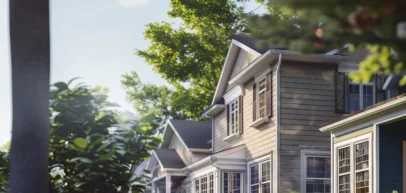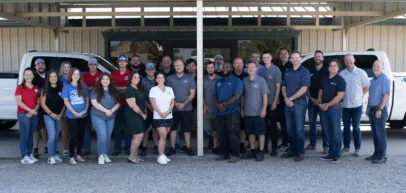ERVs And HRVs: What's The Difference, And Which is Best For Your NW Arkansas Home?
 No matter if it’s a hot and humid summer day, or if it’s in the middle of a long wintertime cold spell, ERVs and HRVs help you enjoy fresh-air ventilation in comfort any time of year. These systems aren’t the same, however, and in northwest Arkansas’ muggy summer climate, an ERV is probably your best choice. But first some background…
No matter if it’s a hot and humid summer day, or if it’s in the middle of a long wintertime cold spell, ERVs and HRVs help you enjoy fresh-air ventilation in comfort any time of year. These systems aren’t the same, however, and in northwest Arkansas’ muggy summer climate, an ERV is probably your best choice. But first some background…
ERVs and HRVs
ERVs and HRVs are whole-house ventilation systems that utilize a heat exchanger to transfer heat between inflowing fresh air, and out-flowing stale air. The significance of this heat-exchange process is that it allows you to enjoy fresh air while at the same time removing the burden from your heating and cooling systems to condition all of the inflowing air. This reduces wear and tear, as well as heating and cooling costs.
For instance, during the heating months, heat from the warm out-flowing stale air is transferred to the colder inflowing fresh air. The opposite heat exchange occurs during the cooling months. The opposing air streams are separated inside the heat exchanger by metal plates, so the out-flowing stale air doesn’t contaminate the inflowing air.
ERVs and HRVs may share existing ductwork or utilize their own duct system to circulate fresh air to your entire home. This is much more efficient, effective and comfortable than opening windows for fresh air. Outside and indoor temperatures are monitored by a comfort-control device to provide ventilation efficiently. You may also program ventilation according to your preferences.
Improve indoor air quality
Whole-house ventilation is necessary to remove contaminants that become trapped inside well-sealed homes. In fact, affordable whole-house ventilation with an ERV or HRV cycles indoor air through your air filter more often, which helps remove allergens, micro-organisms, odors and chemical contaminants, and even auto emissions for homes with attached garages.
Humidity control
The difference between ERVs and HRVs is that ERVs transfer moisture between air streams. The ability to control indoor humidity is a major benefit for northwest Arkansas homeowners, a factor that gives ERVs an advantage over the other system. During the hot and humid summer season, the inflowing air transfers heat and moisture to the out-flowing air. In the winter, the ERV will transfer residual moisture from the outflowing air to help humidify indoor air that tends to dry out during the heating season.
If you would like to enjoy fresh air all year long, please contact us at Paschal Heat, Air & Geothermal to learn more. We have more than 40 years experience helping northwest Arkansas homeowners with their HVAC concerns.
Our goal is to help educate our customers in Northwest Arkansas about energy and home comfort issues (specific to HVAC systems). For more information about ERVs And HRVs and other HVAC topics, download our free Home Comfort Resource guide.
Image courtesy of Shutterstock
general Resources

general
Why Home Warranty Companies May Not Be the Safety Net You Think

general
Paschal Air Plumbing & Electric acquires Patriot Heat & Air to expand services to Oklahoma





